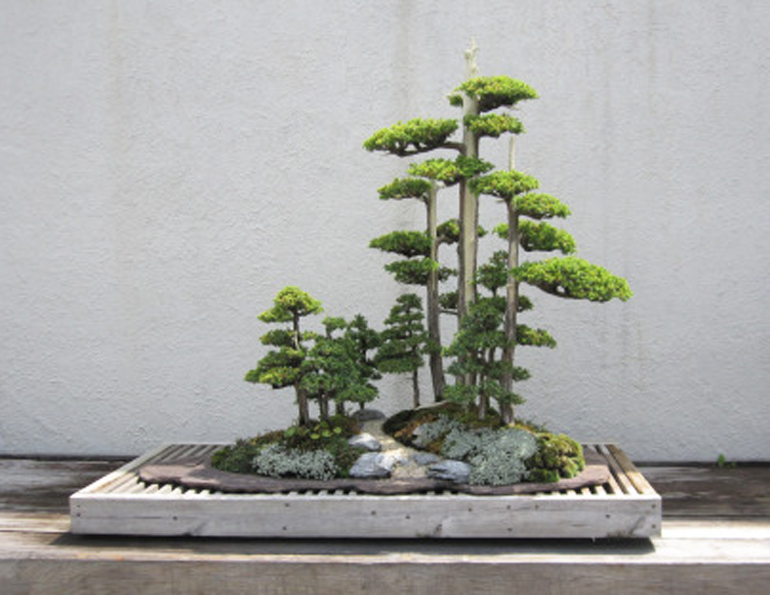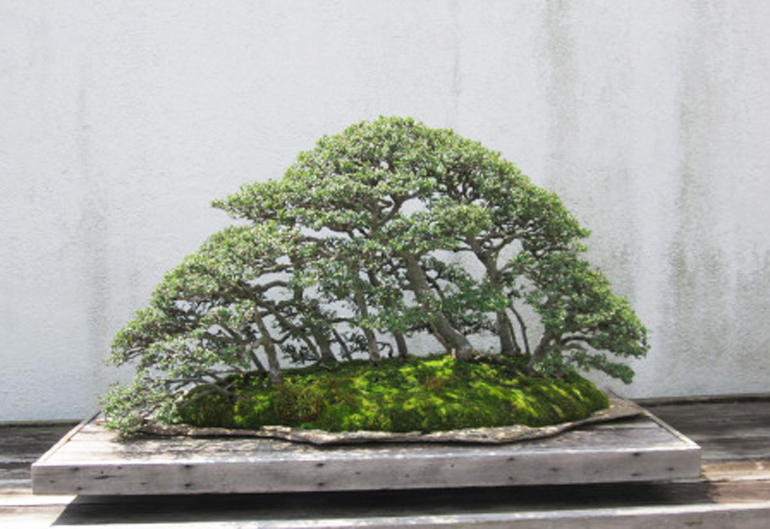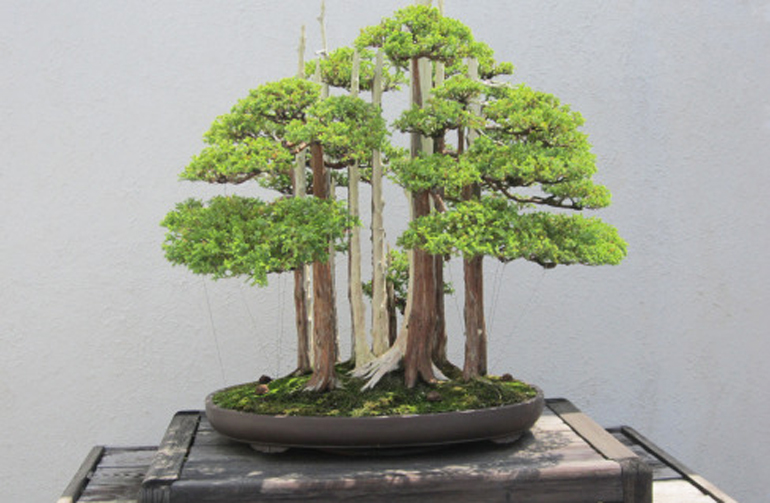
Foemina juniper planting that has that not-so-easy-to-accomplish ability to transport you to a natural mountain scene somewhere. The photo was taken at the National Bonsai and Penjing Museum by Mike Wigginton.
I recently had the good fortune to stumble upon Mike’s Bonsai Page, a blog by Mike Wigginton that’s well worth a visit, especially if you are interested in bonsai happenings in eastern North America. There’s more too, but Mike’s enthusiasm for traveling the East Coast (especially to New England Bonsai where he is student at The Kaikou School of Bonsai) and his personal touch in communicating his discoveries makes for a great blog.
Mike uses a much smaller image format than we do, so all three photos from the U.S. National Bonsai Museum has been blown up (cropped too in an attempt to get even closer to the trees). My apologies for any resultant fuzz.

Here’s another of Mike’s photos from the National Museum. He says he can’t remember, but he thinks the trees are Chinese elms. Based on what we can see of the leaves and trunks, it seems like a pretty good guess.

This one needs no introduction, at least for those of us who have been around the bonsai block a few times. But just in case, it’s John Naka’s famous Goshin. The thing I like about this photo is that it’s a recent update on a famous bonsai. It’s too bad about the top being cut off, but its beauty (if not not its tremendous size) comes through and Mike makes no claims about being a professional photographer.

The header from Mike’s Bonsai Page.

John Naka’s famous sketchbook. Now on special at Stone Lantern.
The elm forest is Marybel Balendonk’s “Shinonome,” and is composed of Catlin elm, a cultivar of Ulmus sempervirens.
I love Goshin
Thanks Al,
Good to hear from you as usual.